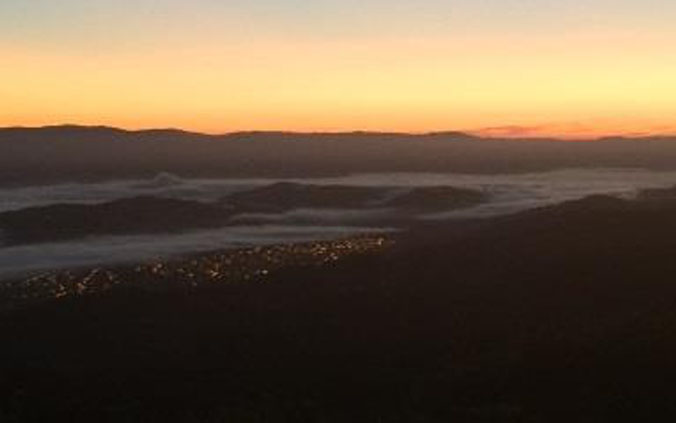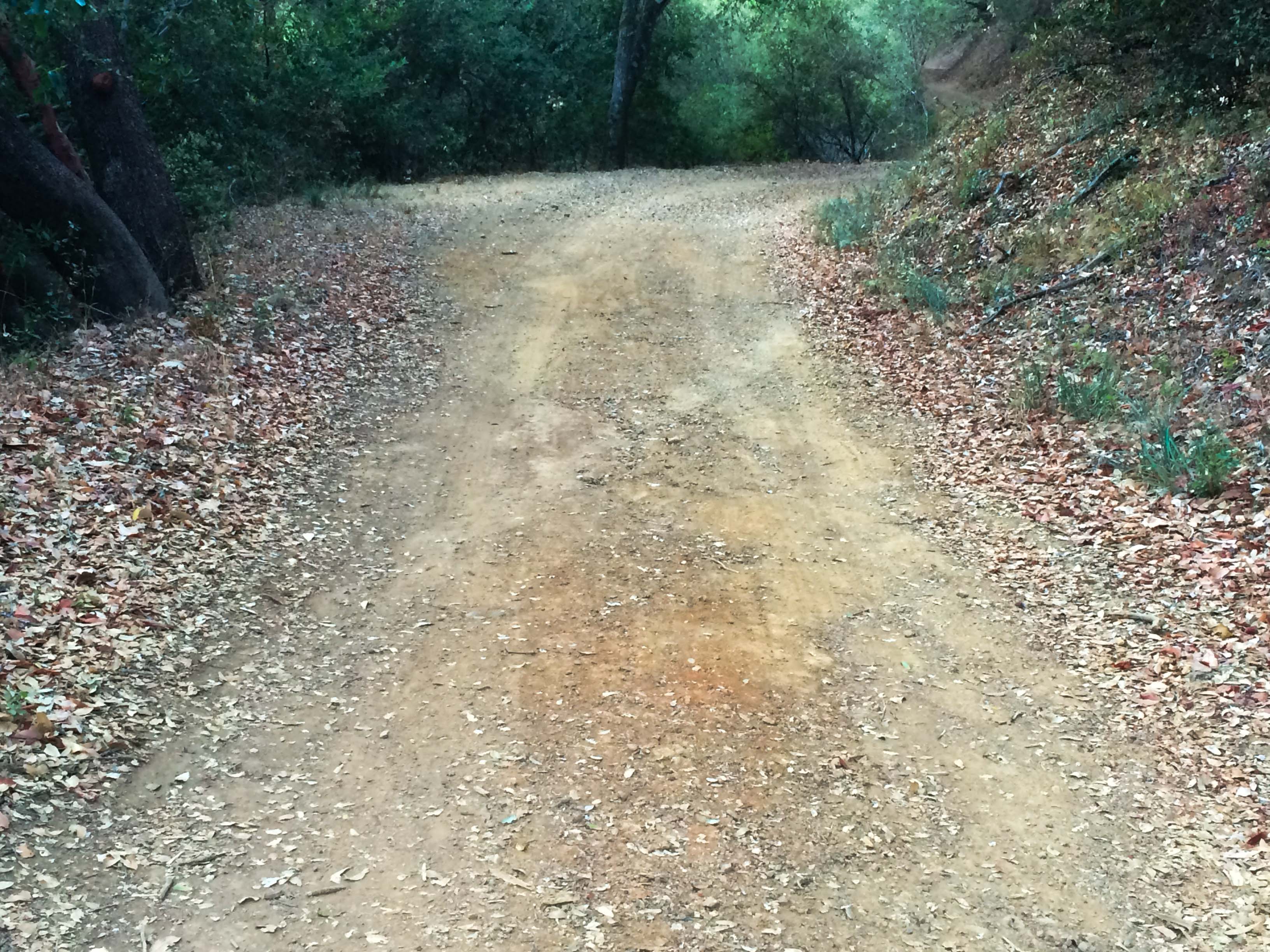Sunrise from Mt Umhunum. Fog in the Santa Clara Valley. Nighttime lights of New Almaden.
My day started early today in the Sierra Azul Open Space Preserve. I had been out since 5:30am searching for puma 26M in order to locate him for recapture. My plan was to start early and search for the radio signal from his tracking collar, and if I found him on property we had permission to work, to then call one of our houndsmen to assist with recapturing him. That is the standard procedure when trying to recapture pumas to replace the batteries on their collars on our project.
Unfortunately, I had no luck finding him. I started driving down from the mountaintop to head home, and I saw fresh territorial scrape markings along the roadside. Upon inspection, I considered the scat on the scrapes to be too dry on the outside to have been made last night. Instead it was probably from 2 nights ago. I had detected 26M from an airplane 2 days prior and knew that he was not near this location, so this was likely a different male puma.
Up ahead on the road, I found puma tracks – big puma tracks. The first ones I saw were a bit dusty, like the wind had blown on them. From many years of tracking in this area I know the wind tends to blow in the afternoon when the sun’s heat creates wind currents. Upon closer look, though, there was more than one set of tracks and they looked fresher. The day before was a Sunday, and on weekends there are many hikers and mountain bikers on this roadway. The fresher set of puma tracks were on top of the bike tracks. Putting together all of my information, it was seeming that the puma had likely been in this area for a couple days because of the drying scat and wind-blown tracks, plus the fresher tracks on top of yesterday’s bike marks.
Pumas rarely spend two days in the same spot unless something is attracting them there, usually food or a mate. It seemed that there was likely more to the story if I looked a bit closer. I quickly found a funny-looking mark in the road, like an elongated human heel. I realized it was the back of a puma’s hind leg, and there was another one next to it, with a funny long mark between them – the puma’s long and furry tail! Most importantly, right next to the puma’s sitting mark was a broad line across the road, like a stroke painted with a brush. The marks were very fine, and in the dust it looked like they were made by hair dragged through the dust. This mark was also on top of the bike tracks making it from last night.
Despite years of tracking pumas, I have only found this a couple of times under these circumstances, and it is the mark of a puma dragging heavy prey, in our area usually a deer. Deer are too heavy and large for a puma to pick up off the ground, so the puma drags it. I looked carefully at the dust and could see that it had been smeared onto the rocks in one direction only, which showed that the deer had been dragged in that one direction – downhill. That made sense from the puma’s point of view – if you needed to drag something that weighed 100+ pounds, which would be easier for you: to drag it uphill and fight gravity, or downhill?
The drag mark led off the road. However, it was hard to follow because of the leaves, so I doubted my ability to follow it and instead followed the drag back where it entered the road from uphill. About 50 feet up I found a place where there was a struggle and the hair of a puma against a small tree. This was the place where the puma killed the deer, a rare find indeed!
Knowing that, and fresh with confidence, I went back to the drag and followed it across the road. With some searching I saw what I was looking for to tell me there the drag had led – a single blackberry leaf, still alive but bent weirdly away from the road. Some force has to bend a plant like that; it doesn’t happen on its own. I headed in that direction and soon found a line of disturbed leaves on the ground and dents in the leaves the size of small plates – the puma’s tracks. I slowly followed the trail through the forest, paying attention to disturbances, for about 300 feet and then the tracks vanished.
Weird! Puma’s don’t just vanish – they are big animals! I must have missed something. I stopped, took some deep breaths to release frustration, and quieted my mind… And then I heard them —flies, lots of them— close-by and to my left. That many flies only gather when there is something attracting them, like bees to a flowering bush. In this case, it was a pile of leaves with a deer ear and antler sticking out of it. The puma’s kill!
I don’t know where the puma is now but he’s probably close by. I’ve watched the GPS locations from 26M shift slowly to the west over the last year, and he’s no longer visiting some places that are great puma habitat – oak trees with numerous deer and female pumas. That has suggested that 26M had a new neighboring male puma. This is probably him that killed this deer. We’ll try to collar him and then maybe we’ll find out.
One day later…
We attempted to catch the puma with the hounds later that day but ground conditions were too dry. Months and months of the annual summer-time dryness take their toll. Moisture holds scent, and animals need that moisture to enable them to follow a track (Note: To experience this yourself, find a scented object and smell it. Now, went your fingers and dampen your nostrils and smell again). After this failed attempt, we pulled the remains of his kill into a box trap.
Our PhD candidate, Justine Smith, led a team that camped out near the trap. During the night, under a nearly-full moon, the puma walked into the trap. Our team tranquilized and fitted him with a cutting-edge accelerometer-equipped collar. He is now dubbed puma 66M by our project. 66m is approximately 4 years old, typical of a resident male puma, and he weighed an impressive 138 lbs. We look forward to tracking him further in the coming years, and seeing how he interacts with 26m and the other pumas in our study.



